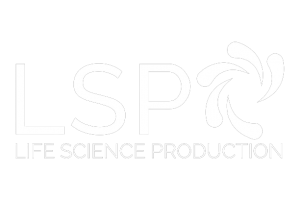The Effects of FBS Storage Temperature on Cell Viability and Growth
Background
Foetal bovine serum (FBS) is an essential component of cell culture media, providing vital growth factors, hormones, and nutrients to support cell proliferation. Typically, FBS is stored at -20°C to maintain its quality and ensure consistent cell growth and viability in research and production environments. However, certain laboratory conditions may require FBS to be stored at 4°C, raising questions about the potential impact on cell culture outcomes. This study investigates the effect of storing FBS at 4°C compared to the standard -20°C on the viability and growth of several key cell lines.
Study Overview
This analysis examined the effects of FBS storage at -20°C and 4°C on three different batches of serum across four widely used cell lines: MDCK, L929, C2C12, and Sp2O/Ag14. Cell growth and viability were evaluated in various conditions, including low seeding densities and different sub-cultures, to determine how storage temperature affects performance.
Key Findings
1. C2C12 (Mouse Myoblast Cells)
Growth and viability: FBS stored at 4°C vs 20°C resulted in minimal reductions in growth and viability for C2C12 cells. However, their reduction growth was more evident under low seeding conditions, where growth decreased by 39.6% compared to cells cultured with FBS stored at -20°C. This suggests some sensitivity of this cell line to storage temperature, even if the impact on growth and viability is relatively modest.
2. L929 (Mouse Fibroblast Cells)
Growth and viability: L929 cells showed a moderate decline in growth when FBS was stored at 4°C, particularly in Sub-culture 1 and low seeding conditions. These cells maintained high viability levels (>95%) regardless of the FBS storage temperature. Thus, the overall growth reduction was not severe suggesting L929 cells are more resilient to changes in FBS storage conditions.
3. MDCK (Madin-Darby Canine Kidney Cells)
Growth and viability: MDCK cells exhibited minimal differences in growth and viability between the two storage conditions. Interestingly, these cells showed improved growth and viability under low seeding conditions when FBS was stored at 4°C, suggesting that for certain experimental conditions, FBS stored at higher temperatures may be advantageous. This indicates that MDCK cells may tolerate or even benefit from FBS stored at 4°C in specific contexts.
4. Sp2O/Ag14 (Mouse Hybridoma Cells)
Growth and viability: Sp2O/Ag14 cells also exhibited minimal reduced growth when cultured with FBS stored at 4°C. This was especially pronounced in low seeding conditions, where growth significantly declined. Furthermore, the viability of Sp2O/Ag14 cells was dropped to 66.87% in Sub-culture 2 and 69.27% in low seeding conditions when FBS was stored at 4°C, highlighting the sensitivity of this cell line to suboptimal storage conditions.



Conclusions
The study underscores the critical role FBS storage temperature plays in supporting optimal cell viability and growth. The findings provide important guidelines for laboratories handling FBS across different cell lines:
1. C2C12 and Sp2O/Ag14 Cells: These cell lines exhibit minimal reductions in both growth and viability when FBS is stored at 4°C, which are more pronounced in low seeding conditions. Therefore, although storing FBS at -20°C is strongly recommended for these cells, FBS stored at 4°C still performs well.
2. L929 Cells: L929 cells are highly resilient, showing only moderate growth reductions and maintaining high viability levels at both storage temperatures. This flexibility allows labs to store FBS at either -20°C or 4°C when culturing L929 cells, depending on other logistical constraints.
3. MDCK Cells: MDCK cells demonstrated minimal negative impact from FBS stored at 4°C and even showed improved growth in low seeding conditions. This suggests that MDCK cells are well-suited to conditions where FBS must be stored at higher temperatures, making them ideal for experiments that require storage flexibility.
Practical Implications
For laboratories working with multiple cell lines, these findings highlight the importance of tailoring FBS storage practices to the specific requirements of each cell line. While some cell types, like L929 and MDCK, can tolerate or even benefit from FBS stored at 4°C, others—such as C2C12 and Sp2O/Ag14—could sustain higher storage conditions.
Optimising FBS storage temperatures based on the cell line’s needs can significantly improve experimental outcomes, ensuring consistent, reliable results in both research and production environments. For sensitive cell lines, maintaining FBS at -20°C can be crucial, while for more robust lines, such as MDCK and L929, storage flexibility can be considered without compromising performance.
